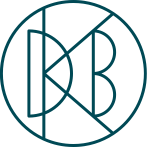What is emoji productivity?
Emoji productivity is a big interest of mine. As far as I can tell from poking around the internet, I’m the first one to use the term. But once I share a few examples, I bet it will be familiar.
Founders of emoji productivity startups believe that work can be fun. Moreover, they know that playful interfaces can help: by setting an upbeat tone, by inviting lightweight expression, and by blurring the lines between consumer and enterprise experiences.
As of January 2021, emoji reactions are featured in the first illustration on Slack’s primary marketing page.
Slack is the canonical emoji productivity app. As of today, the very first interface illustration on their logged-out marketing page features emoji reactions (“reacji”) in response to a post: 25 thumbs-ups (👍), 16 100s (💯), and 32 flying dollars (💸). Slack has been an emoji productivity leader for years, and even played a role in moving the market toward enabling a range of reactions to content instead of restricting one-tap feedback to a single star, heart, or thumbs-up button: they launched emoji reactions months before Facebook did in 2015.
As of January 2021, Notion’s primary marketing page features 36 emoji in the first interface illustration alone.
Notion goes a step further and treats emoji as “icons,” blessed in the interface as a norm. From Notion’s marketing screenshots, it‘s clear that emoji icons are a big part of how the Notion team pictures people using the tool. This expectation translates to the interface: upon creating a new page, the very first template option offered is “Empty with icon.” Hovering over the blank title reveals an affordance to “Add icon.” Clicking either affordance adds a random* emoji as the page’s icon; clicking that emoji opens up an icon selector, with an emoji menu as the primary option and the opportunity to upload an image as the second tab. *Based on my own product experience, I suspect that the random emoji are selected from a curated subset, so that people don’t end up with pages auto-labeled with e.g. the vomit emoji (🤮). But I’d be happy to be wrong!
Quip, where I spent five years as a product leader before joining Matrix Partners as an early-stage investor, is also big on emoji. I fondly remember spearheading an “emoji everywhere” effort to make it so that colon completion for emoji (e.g. typing :tada autocompletes to “🎉”) worked in paragraphs and spreadsheet cells, not just comments and messages. We’d seen that teams using Quip had organically adopted emoji as a way of increasing people’s engagement with documents, and wanted to help users take that insight to the next level.
Emoji productivity is aggressively informal. This can create some awkwardness when grafting emoji culture onto established enterprises. But it also creates opportunity: to engage with each other personally, the way we do with our friends on group texts. The best emoji productivity experiences invite teams to express themselves (by selecting emoji that approximate their emotional state) while also supporting each other (by reacting with celebratory 🎉, sympathetic ❤️, or functional ✅ emoji).
Luke Thomas, founder of Friday.app, says it best in this recent Inc. feature on emoji at work: “Surface level, it feels cheesy, like something that only people who are dating do,.…But then you start using emojis, and you realize they're actually a very powerful form of communication."
In scanning the early-stage startup landscape here at the start of January 2021, I’ve found dozens of emoji productivity apps, and reached out to the founders of several. But I’m sure there are more. Do you know of any emoji productivity founders I should meet? Drop me a line at diana@matrixpartners.com.





